Understanding Corneal Ulcers in Pets: A Comprehensive Guide
Corneal ulcers are one of the most common and potentially serious eye conditions in pets. These painful sores on the cornea—the transparent outer layer of the eye—can lead to severe complications if left untreated. At Envision More Veterinary Ophthalmology in Cypress, TX, we specialize in diagnosing and treating complex ocular conditions, including corneal ulcers. Understanding the causes, symptoms, and treatment options can help protect your pet’s vision and overall well-being.
What is a Corneal Ulcer?
A corneal ulcer is an erosion or open sore on the cornea, often caused by trauma, infections, or underlying diseases. While some ulcers are superficial and heal quickly with appropriate treatment, others can be deep or infected, requiring intensive medical care or surgical intervention.
If left untreated, corneal ulcers can lead to severe pain, vision loss, or even eye rupture. Early recognition and timely veterinary intervention significantly improve outcomes. For more detailed information on various eye conditions, including corneal ulcers, visit the ACVO website.
Causes of Corneal Ulcers in Dogs and Cats
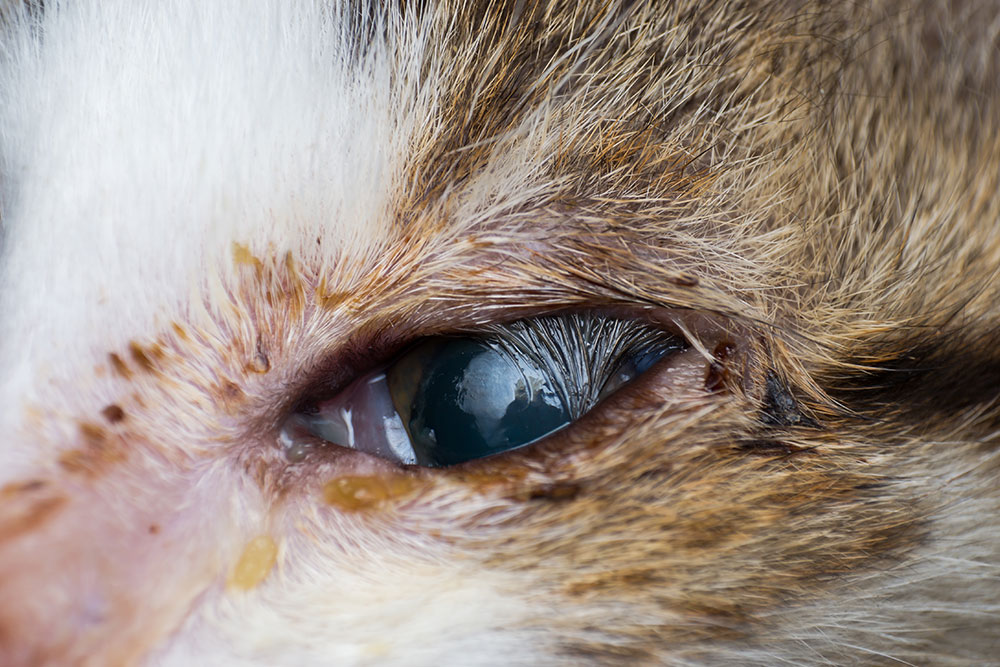
Corneal ulcers can develop due to multiple factors, including:
1. Trauma
- Scratches from rough play or interactions with other animals
- Running through bushes or tall grass
- Contact with foreign objects like sand or debris
- Self-inflicted injuries from excessive rubbing due to irritation or allergies
2. Infections and Inflammation
- Bacterial and fungal infections can lead to ulcer formation, especially in pets with weakened immune systems.
- Viral infections, such as feline herpesvirus, are a common cause of corneal ulcers in cats.
- Chronic dry eye (keratoconjunctivitis sicca, KCS) can make the cornea more vulnerable to ulceration due to inadequate tear production.
3. Underlying Medical Conditions
- Diabetes and Cushing’s disease may impair corneal healing.
- Autoimmune disorders can cause inflammation that weakens the cornea.
- Glaucoma, dry eye, and uveitis can contribute to corneal damage and ulcers.
- Ectopic Cilia and Entropion can cause rubbing on the cornea.
4. Breed Predisposition
Breeds with prominent eyes (brachycephalic breeds) are at higher risk for corneal ulcers due to increased eye exposure:
- Dogs: Pugs, Bulldogs, Boston Terriers, Shih Tzus
- Cats: Persians, Himalayans, Burmese
Symptoms of Corneal Ulcers in Pets
Identifying early signs of a corneal ulcer is critical to preventing complications. Watch for:
- Redness and inflammation in the eye
- Excessive squinting or keeping the eye closed
- Excessive tearing or thick discharge
- Cloudiness or bluish tint on the cornea
- Pawing at the eye or rubbing against surfaces
- Light sensitivity and avoiding bright environments
If you notice any of these symptoms, seek veterinary care immediately. Untreated ulcers can worsen, leading to infections, perforation, or even loss of the eye. Here are signs that warrant a pet eye exam.
Diagnosing Corneal Ulcers at Envision More Veterinary Ophthalmology
How We Diagnose Corneal Ulcers in Cypress, Texas
At Envision More Veterinary Ophthalmology, we utilize advanced diagnostic tools to assess your pet’s corneal health accurately. Our comprehensive eye exams may include:
- Fluorescein staining: A painless test that uses a special dye to highlight ulcerated areas, making them glow under blue light.
- Tonometry: Measures intraocular pressure to rule out glaucoma as an underlying cause.
- Bacterial culture and cytology: Determines if an infection is present, guiding antibiotic selection.
- Ocular ultrasound: Helps evaluate deeper corneal damage and retinal health.
To learn more about our diagnostic methods, visit our ocular examinations page.
Treatment Options for Corneal Ulcers in Pets
Medical Management for Corneal Ulcers
Treatment depends on the severity of the ulcer:
- Superficial ulcers typically heal within a few days with:
- Antibiotic eye drops or ointments to prevent infection
- Atropine drops to relieve pain and dilate the pupil
- Artificial tears for lubrication (especially for pets with KCS)
- Deep or infected ulcers may require:
- Frequent application of medicated drops
- Oral antibiotics or pain medications
- Anti-inflammatory therapy to control swelling and discomfort
Surgical Interventions for Severe Corneal Ulcers
For deep, infected, or non-healing ulcers, surgical procedures may be necessary:
- Grid Keratotomy: Used in recurrent ulcers to promote proper healing.
- Conjunctival Grafting: A surgical procedure where healthy tissue is placed over the ulcer to aid healing and prevent rupture.
- Corneal Transplantation: A last-resort option for vision preservation in extreme cases.
Preventing Corneal Ulcers in Pets
Daily Eye Care Tips for Pet Owners
- Regularly clean your pet’s eyes to remove debris and reduce irritation.
- Trim hair around the eyes to prevent hair from scratching the cornea.
- Use pet-safe goggles for protection during outdoor activities.
- Avoid harsh chemicals or irritants that could damage the cornea.
Importance of Regular Veterinary Eye Exams
Annual or bi-annual ophthalmic exams help detect issues early before they become serious. Conditions like dry eye, glaucoma, and corneal dystrophy can predispose pets to ulcer formation.
To schedule your pet’s next eye exam, contact us today.
Emergency Situations Involving Corneal Ulcers
Seek immediate veterinary attention if:
- The eye appears bulging or sunken
- There is visible perforation or deep ulceration
- The eye suddenly becomes cloudy or white
- The pet is in severe pain and distress
Rapid intervention is critical to preserving vision and preventing complications.
FAQs on Corneal Ulcers in Pets
Can corneal ulcers heal on their own?
Superficial ulcers may heal naturally, but without treatment, there is a high risk of infection and worsening damage, leading to permanent scarring.
Are some breeds more at risk?
Yes, brachycephalic (short-nosed) breeds are highly susceptible due to their prominent eyes and reduced blink reflex.
What happens if a corneal ulcer is untreated?
Untreated ulcers can lead to infection, perforation, or permanent vision loss, possibly requiring eye removal (enucleation).
For more on disease treatment and prevention, visit The Merck Veterinary Manual.
Schedule an Appointment for Your Pet’s Eye Health
At Envision More Veterinary Ophthalmology, we are dedicated to preserving and restoring your pet’s vision. If your pet is showing signs of an eye issue, don’t wait—early intervention is key to successful treatment.
Book an appointment today to ensure your pet’s vision stays healthy.

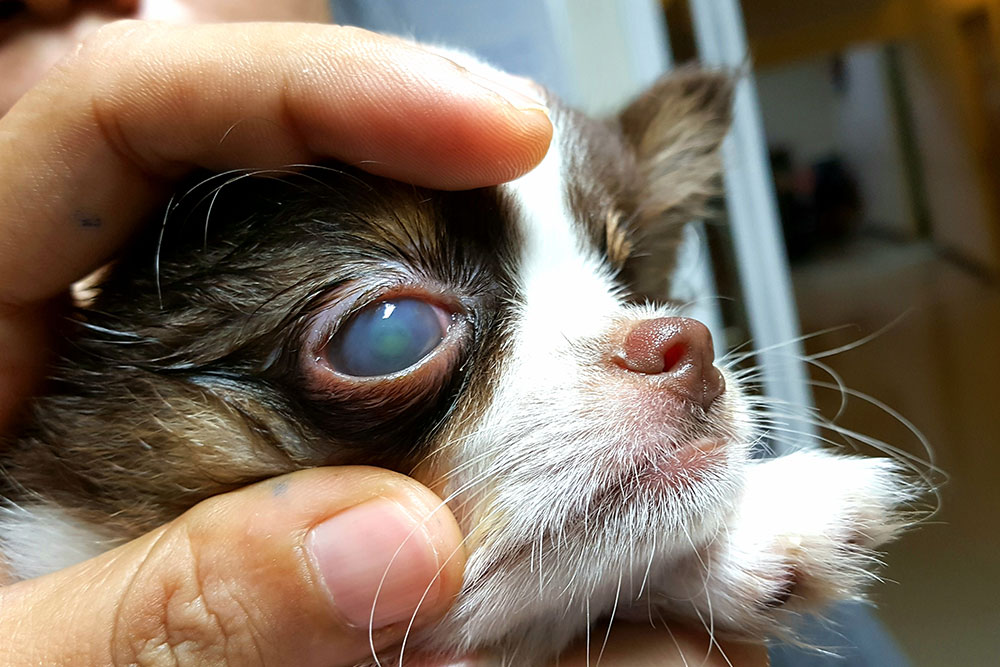
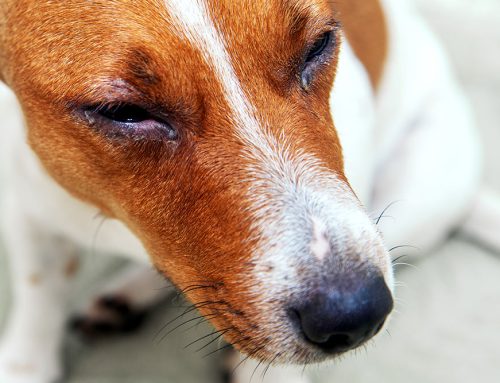
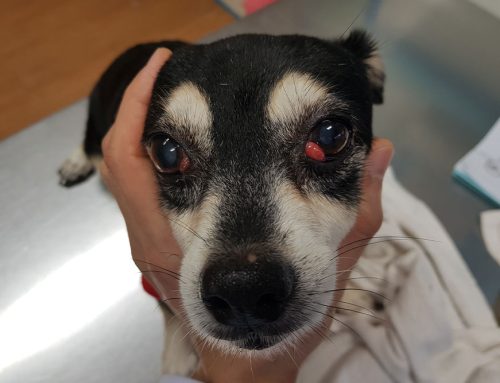
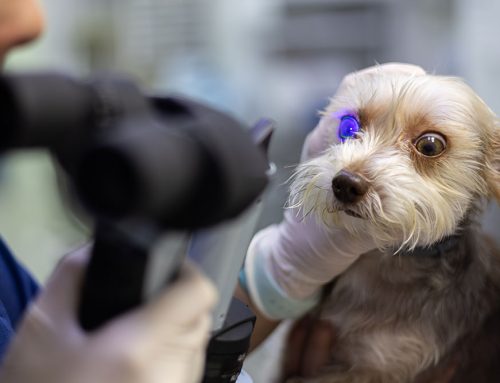


Leave A Comment